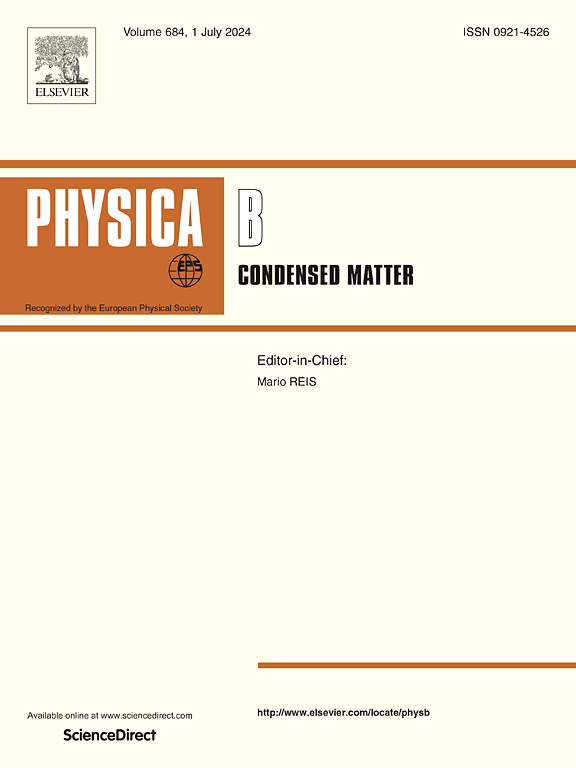Phase field crystal model simulation of transonic dislocations and mode Ⅱ crack propagation
IF 2.8
3区 物理与天体物理
Q2 PHYSICS, CONDENSED MATTER
引用次数: 0
Abstract
The mobility law of an edge dislocation under high strain rates is studied using the phase field crystal model. The transonic dislocation previously accessible only by molecular dynamics method is observed. It is found that there exists a threshold shear stress associated with the dislocation velocity transition from the subsonic to the transonic one. Upon reaching such threshold, stress at the dislocation rear decreases, emitting a decaying shear wave and establishing a dynamic equilibrium between driving forces and energy dissipation. Further, effects of strain rates and crystallographic orientations on crack propagation are explored. At presence of a void, the void located at a position deviating an angle of 45° from the crack plane is the most likely to merge with the crack. Two mechanisms, i.e., new void or crack mediated growth and attraction through directional growth, contribute to the merging.
求助全文
约1分钟内获得全文
求助全文
来源期刊

Physica B-condensed Matter
物理-物理:凝聚态物理
CiteScore
4.90
自引率
7.10%
发文量
703
审稿时长
44 days
期刊介绍:
Physica B: Condensed Matter comprises all condensed matter and material physics that involve theoretical, computational and experimental work.
Papers should contain further developments and a proper discussion on the physics of experimental or theoretical results in one of the following areas:
-Magnetism
-Materials physics
-Nanostructures and nanomaterials
-Optics and optical materials
-Quantum materials
-Semiconductors
-Strongly correlated systems
-Superconductivity
-Surfaces and interfaces
 求助内容:
求助内容: 应助结果提醒方式:
应助结果提醒方式:


